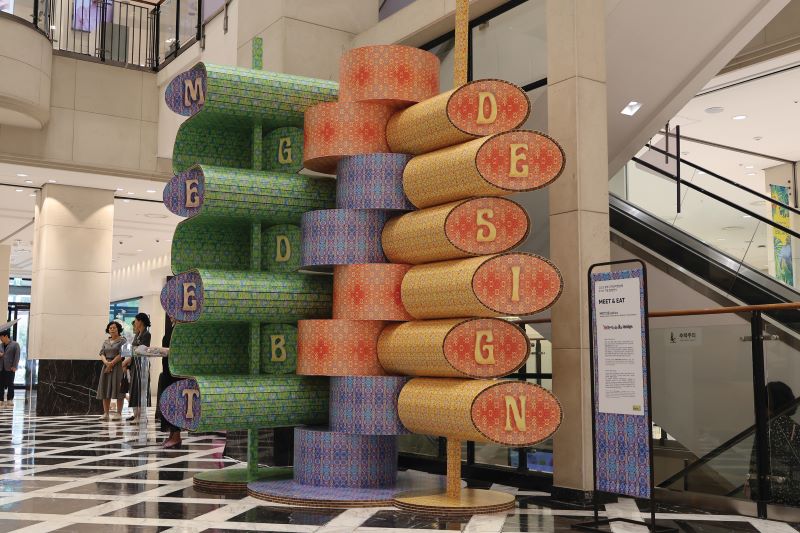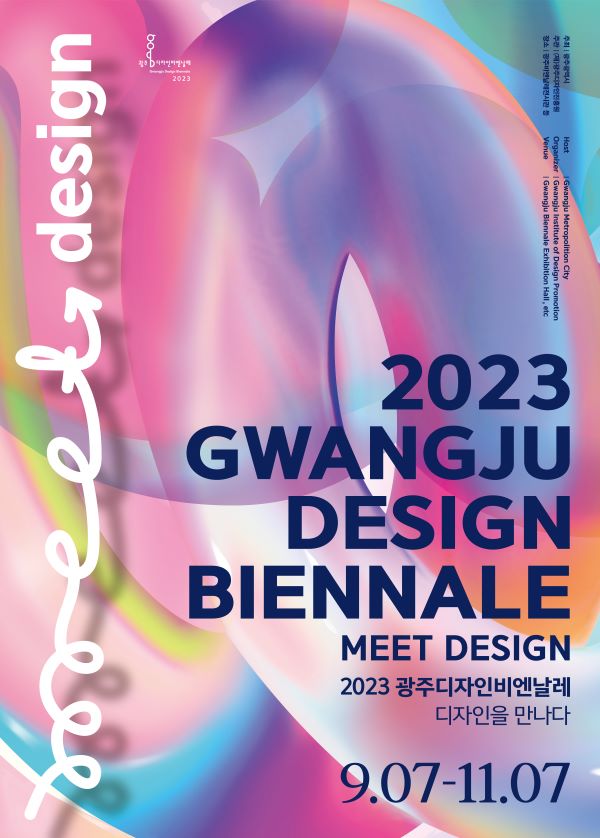Gwangju Design Biennale: Interview with General Director Ken Nah
It’s that time of year again: time for the annual Gwangju Design Biennale. This year’s two-month-long exposition runs from September 7 to November 7. The general director of this year’s decennial exhibition is Ken Nah, and the Gwangju News was fortunate to be able to catch up with him for the following interview just prior to the opening of the Design Biennale. — Ed.
Gwangju News (GN): On October 4, 2022, you were appointed as the general director of the tenth Gwangju Design Biennale (GDB) set for 2023, and the GDB is about to open. What was the motivation for you to accept the position as general director of the GDB?
Ken Nah: I already participated several times in exhibitions and conferences of the last editions of the GDB. As a scholar who researches design, it is a great opportunity to be the general director of the GDB, which presents the value and philosophy of design. The GDB is a venue for discourse on the design of the past, present, and future.
GN: You have an academic background in industrial engineering and engineering design, and now are a professor and director of Hongik University’s Graduate School of International Design. You do various design projects between engineering and art. As a “confluent” person who freely crosses boundaries, what is the value of the GDB?
Ken Nah: This year marks the tenth anniversary of the GDB. Throughout a decade, it has become a representative design event in Asia. I think it is the pride of Gwangju and Korea to have continued international events under the theme of “design.” There are many exhibitions with the theme of “design,” but most of them tend to be industrial exhibitions such as fairs. In terms of this, the design biennial makes a distinction. I believe it is an important value of the GDB to present a future vision through design and a forum for discourse that fits the trends of the times. I have faith that design is not only about the competitiveness of corporations but also of cities and nations. I would like to pursue capturing the essential value of convergence, reflecting the present and future trends of design through the GDB.

GN: On September 6, the GDB will open under the theme “Meet Design.” What is the reason that “Meet Design” was chosen as the theme for this year?
Ken Nah: Design converges with other areas such as technology, design, culture, life, and business. In this sense, “design” and “convergence” share indistinguishable attributes. When things converge thoroughly, the results come out good. So, “Meet Design” was chosen as the theme of the GDB considering such attributes.
GN: What is the biggest differentiation between this year and the last editions of the GDB?
Ken Nah: There needs to be a differentiation between the design biennale and the art biennale rather than between the current GDB the last editions of it. The reason is, people still confuse the art biennale and the design biennale because these two use the same name “biennale.”
Connectivity with business is one of the important characteristics of the GDB. This characteristic distinguishes the GDB from the art biennale. The convergence of design and business is more clarified in this year’s exhibition. In addition, the GDB has always been decorated with new events because the theme and exhibition contents of each event are different.
GN: The four sub-themes of the main exhibition are “Technology,” “Lifestyle,” “Culture,” and “Business.” What is the reason that these four sub-themes were chosen, and how is the main exhibition constructed?
Ken Nah: Convergence is the essential value of design. In light of the rapid development of technologies such as AI and the post-Covid-19 era, the roles of design and convergence are becoming very important. Therefore, I wanted to focus on technology, lifestyle, culture, and business, which are closely related to our lives, industries, and society. The GDB consists of these four thematic exhibitions, and each exhibition shows how closely design is connected to human life.
GN: Can you introduce other programs that citizens visiting the biennale can enjoy in addition to watching the exhibition?
Ken Nah: Visitors to the GDB are very diverse when it comes to their age and occupation, so as a way to evoke empathy and satisfaction from visitors, various events have been prepared. At the Design Biennale Exhibition Hall, you can enjoy things like the “Kakao Experience Zone,” the “Design Biennale with Metaverse,” the “Children’s Design Education Program,” and the “Design Workshop with Designers.” There will also be a variety of things to buy, like design products and goods in design markets.

GN: This year is the tenth anniversary of the GDB. Please tell us about its identity and direction going forward.
Ken Nah: The identity of the GDB is discovered when visitors find what the value of design is. That is to say, the GDB’s identity is strengthened by recognizing the economic value of design itself and global networks related to design and business altogether. What the GDB looks forward to is establishing its own identity and internationalizing it.
GN: What do you anticipate the most from this GDB, and is there a message you want to convey to visitors?
Ken Nah: The GDB will make efforts to globalize its economic value through the cooperation of world-class designers and Gwangju companies. You can get insights into how design has affected corporate management and growth. Additionally, an export consultation meeting is going to be held in order to help local designers to advance overseas with their products.
GN: Can leave a word for English speakers who subscribe to the Gwangju News to enjoy the GDB?
Ken Nah: Design is valuable as a tool for a better life and a better world, so if a design is good, it can make everyone happy. Please come and find the value and joy of design at the GDB. As I already mentioned, various experience programs and commemorative exhibitions will be held in addition to design exhibitions. It would be nice to enjoy the beauty of Gwangju through the GDB and downtown Gwangju.
GN: Thank you so much for this interview. We really appreciate it and are looking forward to visiting the GDB.
Interviewed by Kim Sukang
Translated by Kook Hyuna
Photographs by the Gwangju Institute of Design Promotion





